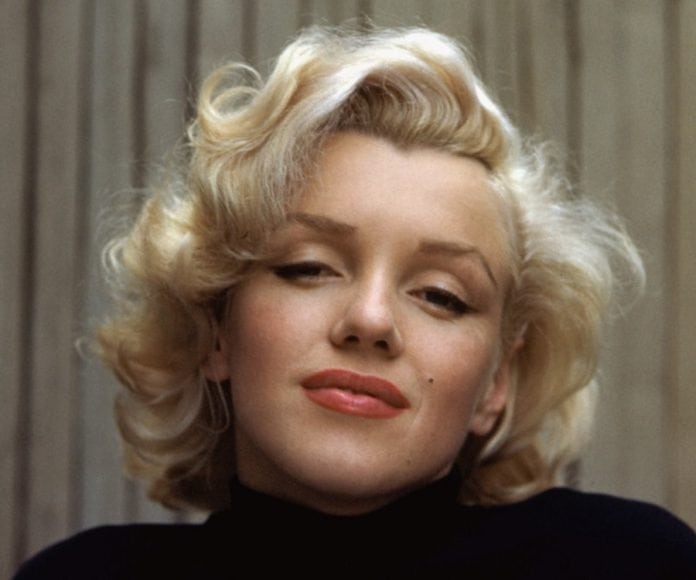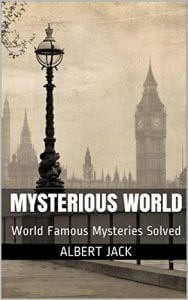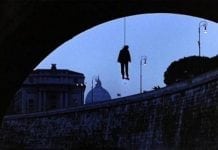The fourth of August 1962 seemed an ordinary Saturday in the life of Marilyn Monroe, in so far as her life could be called ‘ordinary’ at this stage, the world-famous actress now beset by depression and paranoia.
Despite daily therapy with her personal psychiatrist Dr Ralph Greenson, who lived nearby, Marilyn’s anxiety attacks and bouts of depression had worsened and she had accidentally overdosed, and her stomach had been pumped, on more than one occasion.
Marilyn had become increasingly dependent on Dr Greenson and she consulted him constantly about her troubled love life that, by this time, had included relationships with both Kennedy brothers, Frank Sinatra, baseball star Joe DiMaggio, playwright Arthur Miller and scientist Albert Einstein.
She also believed both the Mafia and the FBI, not to mention the CIA, were keeping an eye on her in the wake of the Profumo scandal that summer, where Russian spies had compromised English cabinet minister John Profumo by fixing him up with a young prostitute.
And she was right to worry, because Monroe’s relationships with both JFK and Bobby Kennedy – right in the middle of America’s crisis over the Soviet plan to base nuclear missiles in Cuba, within striking distance of the mainland – had led to her being considered a serious security risk.
Marilyn had spent the previous evening at home, and in good spirits, with her press agent and best friend Pat Newcomb, who had then stayed over. But when Pat arose the following day, Marilyn appeared ‘grouchy’ and claimed not to have slept very well. Her housekeeper Eunice Murray later called in Dr Greenson after Monroe asked her if there was ‘any oxygen in the house’.
As the afternoon progressed, Marilyn’s condition deteriorated: she appeared increasingly drugged and lethargic. Greenson had been trying to break Monroe’s dependency on Nembutal, but knew she had received a new prescription the previous day.
He knew, furthermore, that supplies of her favourite barbiturate were stashed around the house and that she could have taken these at any time.
Pat Newcomb left at 6 p.m. After another session of therapy, Greenson left at 7 p.m. At 7.15 Joe DiMaggio Jr, her ex-husband’s son, dropped by; Marilyn was happy to learn he was breaking off his engagement to a woman she did not like, and DiMaggio Jr later confirmed the actress was in high spirits by the time he left, as did Dr Greenson, whom she had rung shortly afterwards to inform him of the good news.
Then Eunice claims to have woken at 3 a.m. to see a light shining under Marilyn’s bedroom door and a telephone cable leading from a socket in the hallway into the bedroom, both of which were highly unusual.
Finding the door was locked, the housekeeper telephoned Dr Greenson, who rushed over, broke into the bedroom via a window and, at 3.50 a.m., found the Hollywood actress lying naked, face down and clearly dead.
However, the veracity of their account began to seem more questionable when it emerged later in the investigation that, not only would Monroe’s deep-pile bedroom carpet have ensured that no light could have escaped from the room, but that the door had no working lock.
Then the plot appeared to thicken further when it was revealed that Arthur Jacobs, Monroe’s publicist, had been informed of her death at between 10 and 10.30 p.m. the previous evening: he could confirm the time as he had to leave a musical performance of another client to arrange the ‘press issues’.
So we know that before poor Marilyn’s body was even cold, a tissue of lies had already started to be spun.
The autopsy, carried out by Dr Thomas Noguchi – who was later to conduct the high-profile autopsies on Natalie Wood and Robert Kennedy – concluded that Marilyn had died as a result of acute barbiturate poisoning.
This led the psychiatric experts involved with the inquest to a conclusion of ‘probable suicide’. But Los Angeles County Prosecutor John W. Milner – who had attended the autopsy and who was privy to all the facts surrounding her mysterious death – was furious.
He didn’t believe then that Monroe had taken her own life, either deliberately or by accident, and today, over forty years later, he still doesn’t. So what really did happen to the celebrated Hollywood actress?
Norma Jeane Mortenson arrived in the world at 9.30 am on 1 June 1926, at Los Angeles County Hospital. Her mother, Gladys Pearl Monroe Baker, had already walked out on Norma’s father (well, according to the birth certificate at least), ostensibly because he had become ‘boring’.
Gladys was later diagnosed with hereditary paranoid schizophrenia, a mental condition that also afflicted her mother and father and which had contributed to the deaths of two of her grandparents.
When Norma Jeane was only seven years old, her mother was committed to a ‘rest home’ and the little girl was then moved around various foster parents and institutions.
With nowhere to live – her latest foster parents were moving to the East Coast and couldn’t take her with them – she got married, to James Dougherty, just two weeks after her sixteenth birthday.
When America entered the war in 1941, her new husband joined the navy and Norma Jeane went out to work. At just seventeen, she was already drinking heavily and suffering from depression.
As a little girl, she had dreamed of stardom: ‘Even as a child I used to think as I looked out on the Hollywood night that there must be thousands of little girls sitting alone like me, dreaming of becoming a movie star.
But, I thought, I’m not going to worry about them. I’m dreaming the hardest.’ It must have seemed a faraway dream when she was clocking in at the munitions factory every morning at 7 a.m.
During the summer of 1944, Yank Magazine commissioned a feature on young American women at work for the war effort. Private David Conover had been moving along the assembly line taking pictures of the most attractive employees when he came upon a young blonde who was busy fitting propellers.
Although her face was covered in dirt and grease, he stopped in his tracks, stunned by her unusual beauty. Private Conover immediately offered Norma five dollars an hour to model for him, and the resulting pictures attracted the attention of the Blue Book Modelling Agency.
Within a year, Norma Jeane had featured on the front cover of no less than thirty-three national magazines, catapulting the young lady towards national stardom. Her first marriage proved an early casualty of her obsessive, meteoric rise.
In July 1946, one month after her twentieth birthday, Norma Jeane secured a contract with 20th Century Fox. The studio wanted her to have a more glamorous name and, after a few duff suggestions, the casting director Ben Lyon came up with ‘Marilyn’, after his own favourite actress, Marilyn Miller.
Then Norma Jeane offered her mother’s maiden name. The studio director wearily asked what it was, but his eyes lit up when she replied ‘Monroe’.
There then followed four years of success and failure in both her career and love life leading to, after the sudden death of a lover, her first real suicide attempt when she swallowed a bottle of sleeping pills.
Throughout the 1950s, Marilyn became more and more ubitiquous, appearing in hundreds of films, TV shows, musicals and radio broadcasts. By the end of the decade, Norma Jeane had become Hollywood’s golden girl, mixing with the rich, famous and powerful. But the recognition she craved didn’t make her happy.
Her marriages to two much older men, each highly acclaimed in his field, clearly illustrated her search both for security and a father figure. Her short union with baseball star Joe DiMaggio was quickly followed by her third marriage, this time to America’s most celebrated playwright, Arthur Miller.
It was after her divorce from Miller, in 1961, that things began to go badly wrong. Was it really a coincidence that this was when her affair started with the most powerful man in the world, President John F. Kennedy?
After the divorce, Marilyn, increasingly dependent on alcohol, barbiturates and Dr Greenson, became friends with English actor Peter Lawford and his wife Patricia, the sister of JFK. It was at one of their parties that she first met the Kennedy brothers.
Unsurprisingly, this drew the attention of the FBI, whose head Edgar J. Hoover was obsessed with building a file on the growing sexual adventures of the President and his brother, the attorney general. The Mafia were also taking a close interest in the actress.
The FBI among others believed that the Kennedy brothers’ father Joe had been a partner of the infamous Mafia don Frank Costello during the Prohibition years. It was said that decades later, when JFK stood for President, the old man had called on the Cosa Nostra to help buy votes.
Some Mafia members believed the Kennedys then owed them a favour or two and expected a close, lucrative relationship with the Kennedy administration once John had taken office.
So they were furious when Bobby Kennedy, the newly appointed attorney general, made it his personal crusade to crack down on organized crime, making the wrong sort of enemies in the process, many of whom vowed revenge.
Even so, most Mafia members realized the Kennedy family, the biggest mob of all of them, now had public opinion firmly on their side, not to mention all the state police forces and the US military at their instant beck and call.
Any act of revenge on the Kennedys would have to be carefully thought out, more carefully than the customary sort of mob hit on a rival family member. In 1962, exposing their many infidelities to the press was thought the best tactic to diminish public support for the Kennedy brothers.
Monroe had found herself in bed, so to speak, with some of the most dangerous people in the world, and still didn’t realize it. Instead she was naïvely dreaming of becoming America’s First Lady.
Marilyn’s love affair with the President became common knowledge among the American power set during the first six months of 1962, but remained unknown to the public. Edgar Hoover’s FBI were busily building a file detailing Monroe’s movements and had even, some believed, placed listening devices inside her home.
Increasingly worried of her ‘chattering’ about their relationship, the President was even more alarmed by his brother-in-law’s discovery that she kept a detailed diary of their sexual encounters and what they had discussed. JFK abruptly ended the affair in July, using his brother Bobby as the messenger.
Unfortunately for the administration, Bobby too then fell under the actress’s spell. Marilyn, still bitter from her rejection by the President, did not reciprocate his feelings but she embarked on a love affair with him nevertheless.
Marilyn had no intention of marrying the smitten younger Kennedy, however, even on one occasion asking Dr Greenson, ‘Oh, what am I to do about Bobby?’ Greenson was more concerned about the psychological damage such affairs were having on his client and about her personal safety.
The international threat to America was from the Cuban Missile Crisis and the domestic problem was coming from the Mafia. And Marilyn knew too much about too many people, mobsters and politicians alike, and more than one group was worried that she might spill the beans.
Her increasingly erratic behaviour had turned her from a trophy blonde to an outright liability. When Bobby unceremoniously broke off their affair by having the private telephone line he had installed for her disconnected, Marilyn was devastated. She bombarded the White House switchboard with telephone calls but was never connected with either Kennedy.
Distraught, she had told friends – including Peter Lawford, JFK’s brother-in-law – that she planned to ‘come clean’ about her relationships with both brothers in revenge for the way she felt she had been treated by the pair.
However, in July 1962, during the final two weeks of Marilyn’s life, there were reports that she was feeling more positive about the future than she had been. She had received several new offers of film parts, her friends were many and supportive and, despite everything, she was still optimistic of reviving her relationship with the President.
In this frame of mind, she happily accepted an invitation from Frank Sinatra to a weekend at Cal-Neva Lodge on Lake Tahoe, believing the Kennedys to be behind the invitation.
Accounts of this weekend differ but they are all highly coloured. One goes that she was taken aback to discover the brutal gangster Sam Giancana was there, apparently to warn her against creating problems for the brothers.
Another version has Joe DiMaggio arriving unexpectedly at the lodge and becoming furious with both Sinatra and the Kennedys for luring his ex-wife there, plying her with drugs and alcohol and taking compromising photographs to be used as blackmail should she ever threaten to expose her affairs with John and Bobby.
The following weekend Marilyn was found dead at her home in Brentwood, California, having apparently committed suicide, and the undisputed facts reveal mystery and intrigue involving some of the best-loved and most influential people on the planet.
According to the official version of events, after Joe DiMaggio Jr left at around 7.30 p.m., Peter Lawford then phoned Marilyn at 7.45 p.m. to invite her to a party.
He testified Monroe sounded heavily drugged – somewhat contrary to the upbeat mood reported by DiMaggio – and that she failed to respond several times before shouting her own name repeatedly down the phone.
Lawford then quoted how Marilyn had ended the conversation: ‘Say goodbye to Pat, say goodbye to the President and say goodbye to yourself because you are a nice guy.’ She then hung up.
The next official evidence we have is the statement of Eunice Murray, the housekeeper, who claimed to have seen the light on under the bedroom door at 3 a.m. and telephoned Dr Greenson. He then confirmed he arrived and broke in through Marilyn’s bedroom window at 3.50 a.m. to find the actress dead, at which point he telephoned the police.
At 4.25 a.m. Sergeant Jack Clemmons of the Los Angeles Police Department received a phone call from Dr Engelberg, Marilyn’s personal physician, who told him his patient had committed suicide.
Given what we know about the evidence today, it would have been quite impossible for Engelberg to diagnose suicide at that stage, although Clemmons is adamant that that is what he was told.
When the police officer arrived at the scene, he noted three people with the body, Eunice Murray, Dr Greenson and Dr Engelberg, who led Clemmons to the body and made a point of bringing to his attention the bottles of drugs on the bedside table. Clemmons noted:
‘She was lying face down in what I call the soldier’s position. Her face was in a pillow, her arms were by her side, her right arm was slightly bent. Her legs were stretched out perfectly straight.’
The policeman’s immediate reaction was that she had been placed in that position.
Having been at the scene of numerous suicides, he knew that, contrary to what most people believed, the victim of an overdose of sleeping tablets tends to suffer convulsions and vomiting before they die, often ending up in a contorted or twisted pose.
The testimony of the three witnesses convinced Sergeant Clemmons that they were lying. Publicly all three witnesses maintained their original story that the body was found at 3.50 a.m.; privately they stated the body had been discovered four hours earlier but they had been ‘not allowed’ to contact the police until 20th Century Fox had given them permission.
Clemmons then noted that no light – let alone the telephone cable reported by Eunice Murray – was able to pass under the bedroom door and that it had no working lock.
Crucially, there was no drinking glass in the room, or indeed any kind of receptacle that could have contained the water or alcohol Marilyn would have needed to swallow so many pills.
The police officer took a closer look at the window Dr Greenson claimed to have broken to gain access to the room, and found broken glass on the outside, consistent with the window having being broken from inside the room and not from the outside.
The autopsy conclusions were that, judging by the high level of sedatives – 8 milligrams of hydrate and 4 milligrams of Nembutal in her blood count and a much higher concentration, 13 milligrams of Nembutal, in her liver – and the absence of any foul play, Marilyn had taken her own life.
These findings were soon disputed by some key forensic experts, however, who pointed out that no traces of Nembutal had been found in either her stomach or intestinal tract. There was also no evidence of the yellow Nembutal capsules, which would not have fully dissolved by the time the autopsy took place.
An injection was ruled out because no needle marks were found and because such a high dose would have caused instant death plus residual bruising around the site of the puncture mark.
So, as Marilyn appeared to have taken nothing orally and nothing directly into the veins, forensic experts concluded that the drug had been administered by way of an enema.
This was consistent with the bruising on the victim’s lower back and would account for the ‘abnormal discoloration of the colon’. In other words, the drugs that killed her must have been introduced anally.
Now, I’m no expert, but I think that most people would agree that to prepare a fatal cocktail of drugs and then push it up your own backside is an unlikely way to commit suicide.
So despite Monroe’s famously erratic behaviour and ongoing depression, suicide has been ruled out by every mental-health professional reviewing her case.
Indeed, it is alleged that detailed notes made of taped conversations with her psychiatrist only a week before her death reveal her as anything but suicidal.
But those tapes, along with other vital evidence and statements, have all gone missing. John W. Milner has been consistently clear in his views: ‘Marilyn Monroe bears the stigma of suicide. This is wrong and must be corrected.’
So, if we are to rule out suicide then there are only two other possibilities for us to consider: accident or murder. But if Marilyn did die as a result of a rectally administered barbiturate enema, then it is hard to see how that could be an accident.
Let’s be honest, who could claim that they pushed a poisonous drug up Marilyn Monroe’s rear by accident – and surely she would have noticed?
Marilyn’s psychiatrist Dr Greenson and doctor Dr Engelberg were working together to reduce the insomniac actress’s Nembutal dependency by substituting it for chloral hydrate, but taken together they are a powerful and dangerous mixture.
One suggestion is that Engelberg had given Monroe a further prescription of Nembutal and forgotten to inform Greenson.
As Engelberg was having serious marital problems at the time, other, more personal, matters may have occupied his mind.
Perhaps Marilyn – who once commented, ‘Yes, I enjoy enemas, so what’ – had been taking Nembutal throughout the day, explaining its presence in her liver and blood.
Without knowing this, Dr Greenson could then have prepared a chloral hydrate enema to be administered by Eunice Murray, which became deadly on interaction with the Nembutal.
Any doctor would be reluctant to admit to such a mistake, especially in relation to such a high-profile patient, and this would perhaps explain the many discrepancies in the stories of those who found the body and the apparent staging of the scene that the police were unhappy about.
It would also explain evidence that the body was discovered at 10 p.m. and not 3.50 p.m., along with an ambulance driver’s account that Marilyn was taken to hospital in a coma before midnight where she died before the body being returned and ‘found’. Eunice Murray would certainly wish to stay quiet, as it would have been she who administered the fatal dose.
So this is quite a powerful theory. But if it is true then the doctors involved would only be guilty of negligence, and certainly not murder.
But if not an accident, could it have been murder? Several witnesses have placed Bobby Kennedy at the scene on the day of the death. There is also reliable evidence that he removed Monroe’s diaries and other notebooks.
Her angry telephone calls to the White House and the fear of her speaking publicly were a real problem for the Kennedy administration. Indeed, it would be a mistake to rule out certain governments at certain times taking drastic action to prevent a scandal.
But as Bobby Kennedy approached most matters from a very high moral standpoint, it is hard to believe he would personally hold Monroe down and push barbiturates up her bottom to kill her.
He made no secret of his visit to Monroe that day and was seen there by many people, including a policeman. Are we to seriously believe he – or somebody he was with on that day – killed Monroe?
After all Marilyn Monroe, the drunken actress who famously sang a very breathy ‘Happy Birthday, Mr President’ at Madison Square Garden in front of the world’s media, hardly posed a major threat to the most powerful government in the world.
What classified information could she alone possibly have that no one else had access to? The promiscuity of the Kennedy brothers was well known in 1962.
Might the government’s fear of the headline ‘I slept with the President by Marilyn Monroe’ have led to her assassination when the chorus of replies would probably have been: ‘Who hasn’t?’
The idea that the American government silenced Marilyn sounds like a classic urban legend, the kind of story that just grows over the years, so that the more times it is told the more true it appears to become. We know Marilyn died of a drugs overdose and we know it could not be suicide.
So why prove that somebody pushed a killer drug up her bottom when a staged car accident, drowning, bullet in the head, or even a drugged drink that would leave residue in the stomach to make her death look like suicide, would have been a better option?
If the Kennedy government intended to kill off everybody who had embarrassing information or who opposed their administration, then why should they start with a scatty film star?
And as for the idea that Marilyn Monroe was murdered by the Mafia, who staged it to make it look as if the Kennedys had been involved, seems even less likely when a cold, clear look at the evidence is taken. Nobody can explain why anybody trying to make a murder look like suicide would use a killer enema – it just doesn’t make sense.
If the Mafia – who had perfected, by then, their concrete boots technique – had really wanted to get rid of her, then Marilyn is more likely to have vanished without trace, either swimming with the fishes or wrapped inside a motorway flyover.
Instead I think the biggest clue lies in a comment alleged to have been made on the night of Monroe’s death, by Dr Greenson: ‘God damn it, he has given her a prescription I didn’t know about.’
So it seems after all that the death of the most famous woman on the planet might well have been a simple, tragic accident caused by the people Marilyn most relied on. – Albert Jack
Albert Jack AUDIOBOOKS available for download here
Albert Jack’s Mysterious World







































